Disclaimer: This post may contain Amazon affiliate links. Sudachi earns a small percentage from qualifying purchases at no extra cost to you. See disclaimer for more info.
Featured Comment:
“Great recipe. Made this again tonight. Always a hit! Using chicken thighs is the key. I only had rice flour tonight but was just a crispy. There was nothing left after 24 hours. 😉”
– Garry (from Facebook)
What is Tatsuta Age?
Tatsuta-age (竜田揚げ) is a dish made from chicken, marinated with a soy sauce-based marinade, coated with potato starch, and fried in oil. It is a type of Japanese fried chicken also known as “karaage“.
It is said that the name comes from the reddish color of the soy sauce when fried and the white starch floating in some places, which resembles the Tatsuta River with its flowing autumn leaves.


How I Developed This Recipe
In developing this Tatuta Age recipe, my focus was on achieving the distinctively crunchy texture that sets Tatutaage apart.
The minimalist approach emphasized the “simple is best” philosophy, particularly in the marinade. This simplicity allows the unique qualities of Tatutaage to shine through, resulting in a delicious, satisfying dish.
I encourage you to try it and experience the delightful crunch and flavor that make Tatuta Age a standout dish.
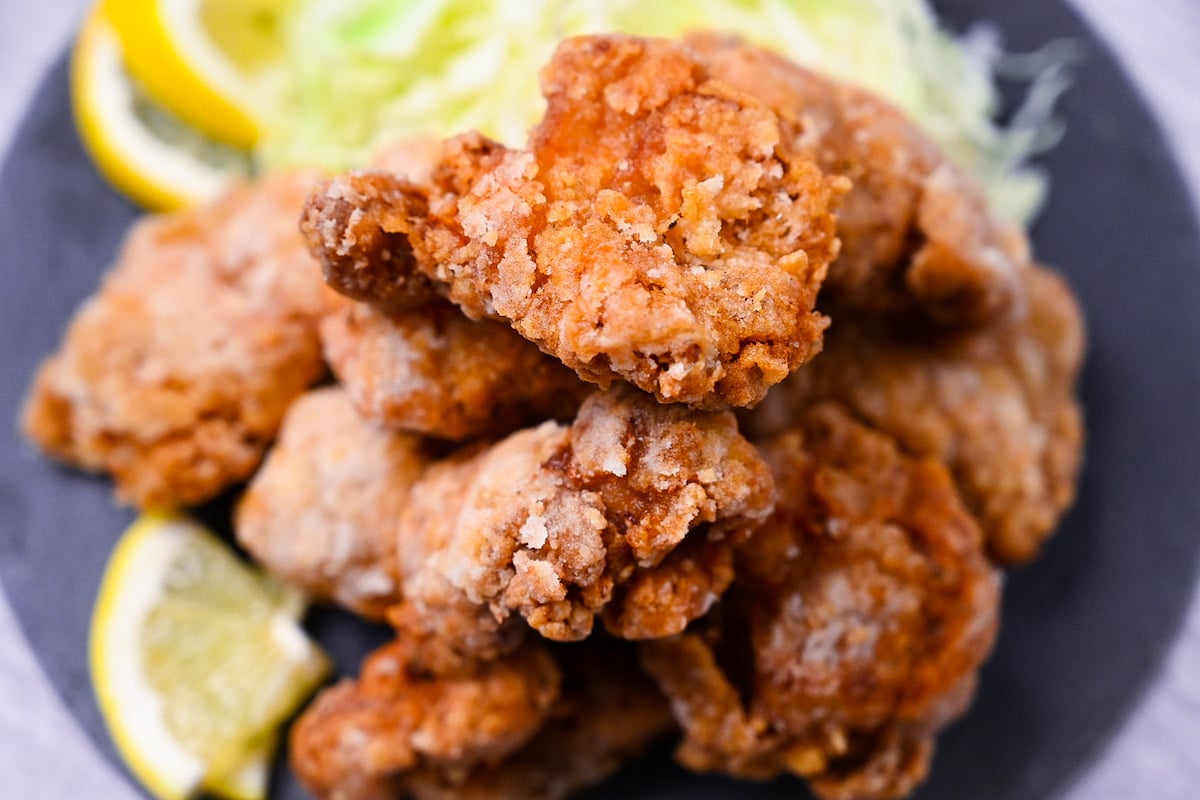
Ingredients & Substitution Ideas
- Boneless Chicken Thigh: The preferred choice for Tatsuta Age due to its texture and ability to hold the coating well. Chicken wings are an alternative, but chicken breast is NOT RECOMMENDED as the coating tends to fall off.
- Soy Sauce: Kikkoman is a trusted and budget-friendly choice worldwide. For additional information and alternatives, refer to my comprehensive soy sauce guide.
- Sake: Enhances the flavor and tenderness of the meat. If unavailable, white wine or dry sherry can be substituted.
- Black Pepper: White pepper is also suitable as an alternative.
- Grated Garlic & Ginger: Ready-made paste is a convenient option without compromising on flavor.
- Potato Starch: Essential for the coating, with cornstarch or tapioca starch as possible substitutes.
- Cooking Oil: Choose oils with a high smoke point, like canola, sunflower, or peanut oil, for shallow frying.
Curious about the exact brands and products that bring my recipes to life? Discover the brands and ingredients behind my recipes at the Sudachi Amazon Storefront. Explore my handpicked pantry essentials and find your next kitchen favorites!
Jump to Full Recipe Measurements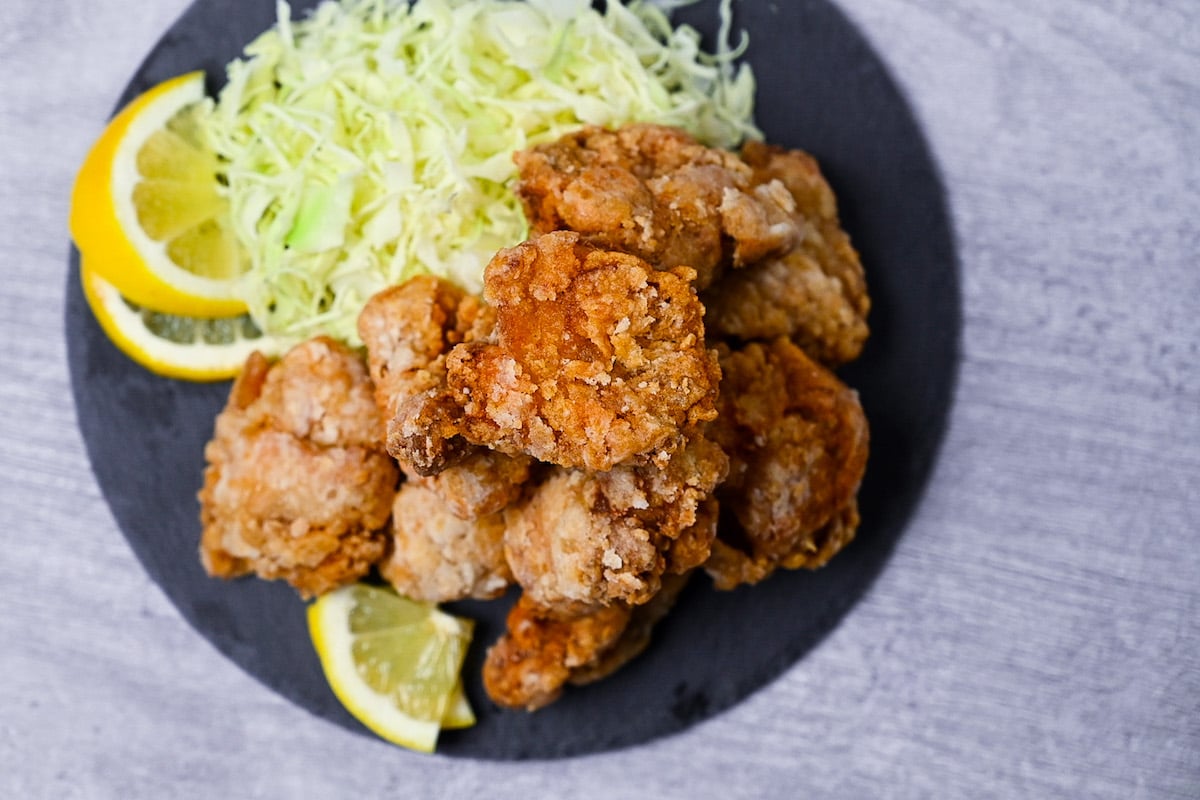
Visual Walkthrough & Tips
Here are my step-by-step instructions for how to make Tatsuta Age at home. For ingredient quantities and simplified instructions, scroll down for the Printable Recipe Card below.
Cut your chicken thigh into bitesize pieces. Try to keep them uniform as this will ensure even cooking.
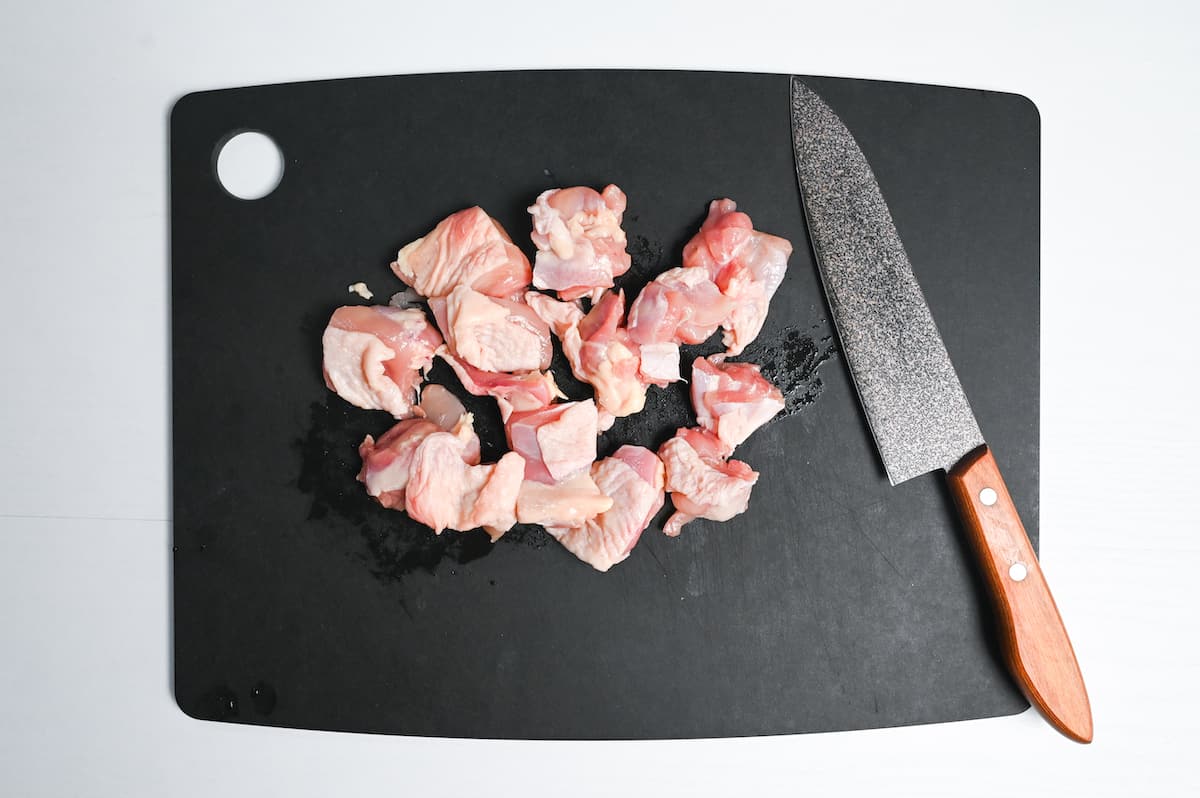
Place the chicken in a container and add soy sauce, sake, black pepper, grated garlic, and ginger. Mix them all together until the chicken is evenly coated. Cover and marinate in the fridge for 30 minutes.

Once the chicken has finished marinating, preheat your oil to 160°C (320°F). Since this recipe is shallow fried, use a pan wide enough to place all your chicken in one layer. The oil should be about 3cm high (approx just over 1 inch).
Add potato starch to a container. Take the chicken and shake off the excess marinade before rolling it in the starch. Be generous and make sure the chicken is fully coated all over.
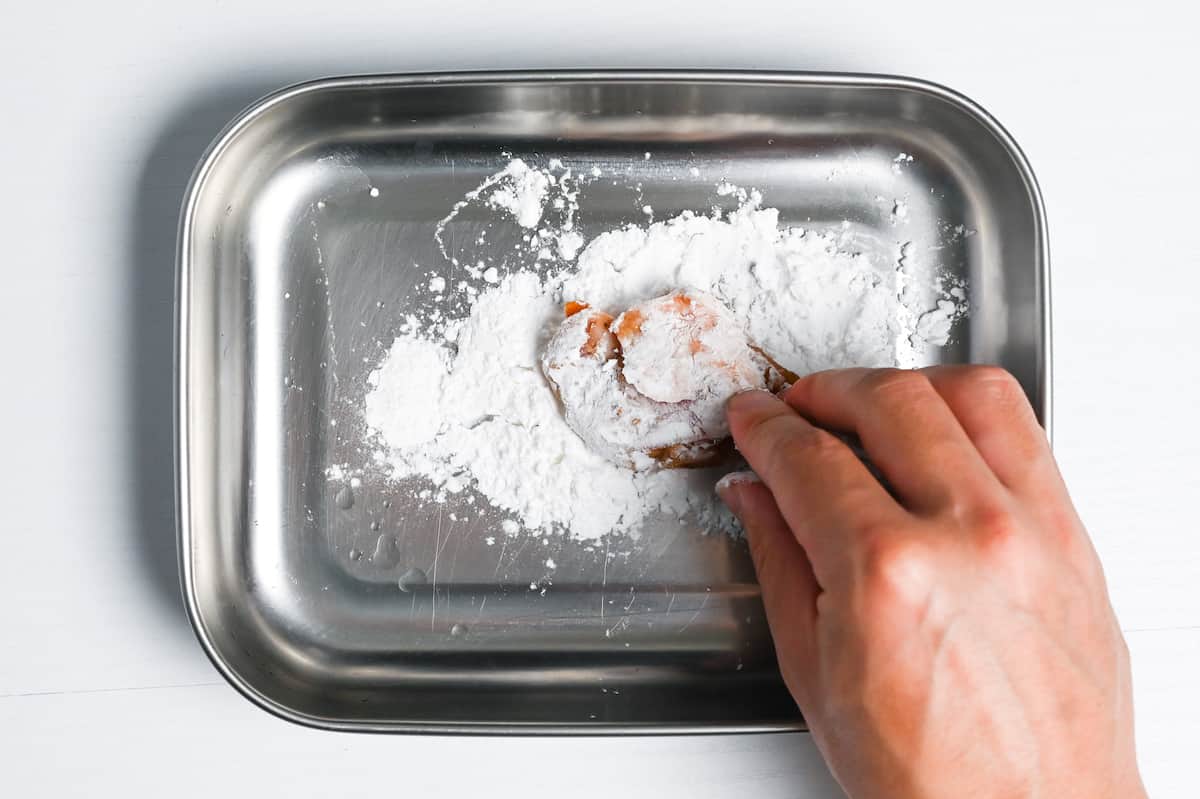
Once the oil is hot enough, place the chicken pieces in and fry for 3 minutes on each side.
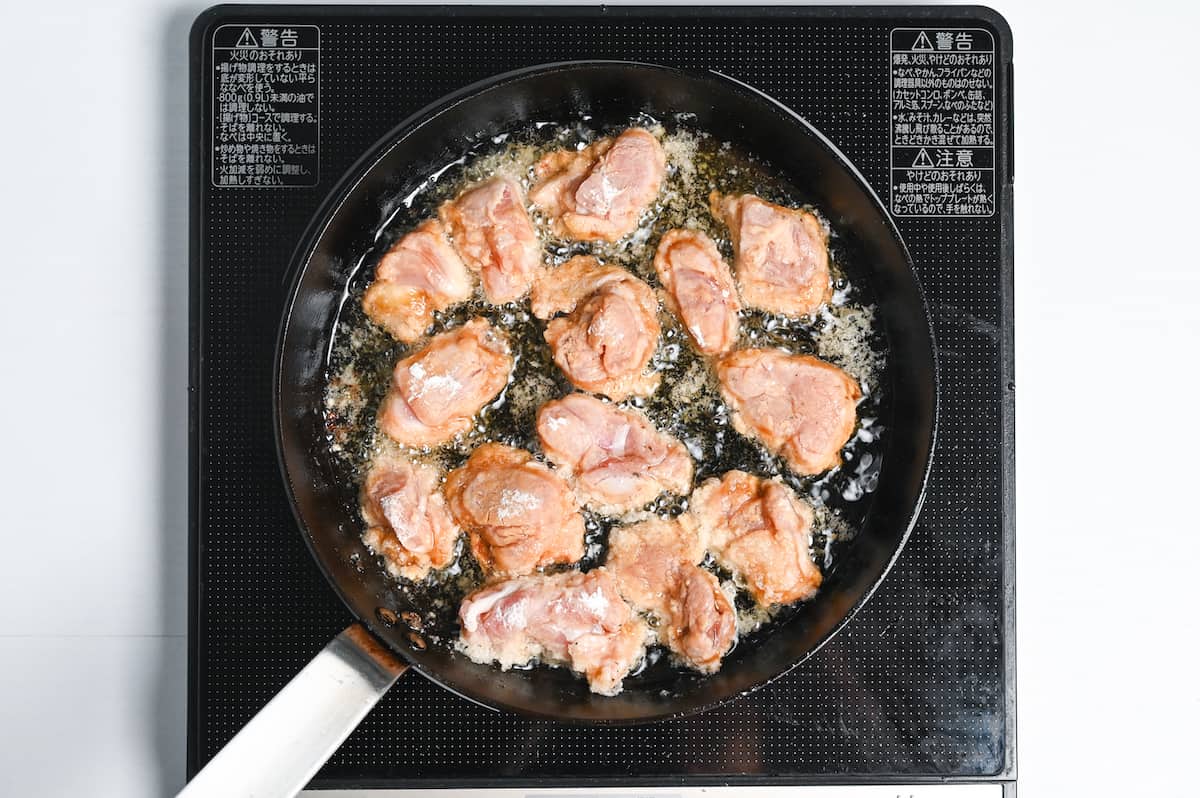
Increase the heat to 190°C (374°F) and fry for 1 minute on each side at the higher temperature.
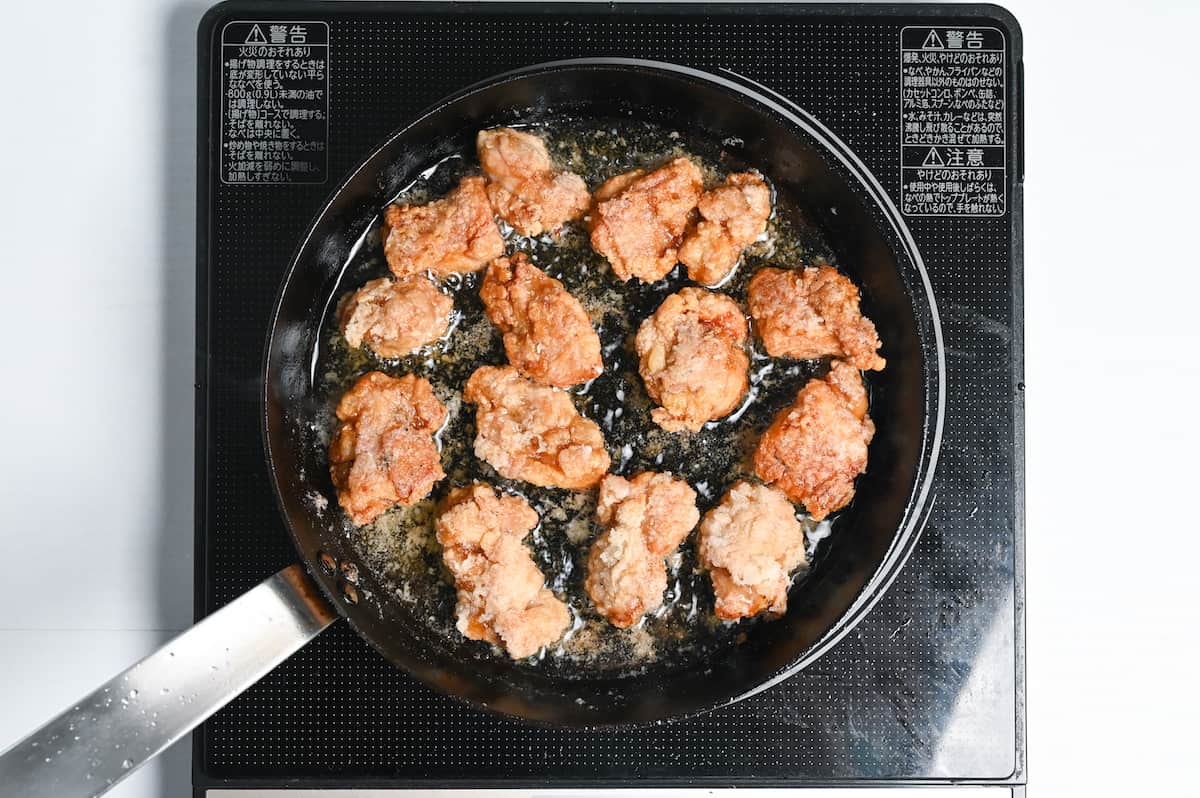
Transfer the tatsuta-age to a wire rack to allow the excess oil to drain off.
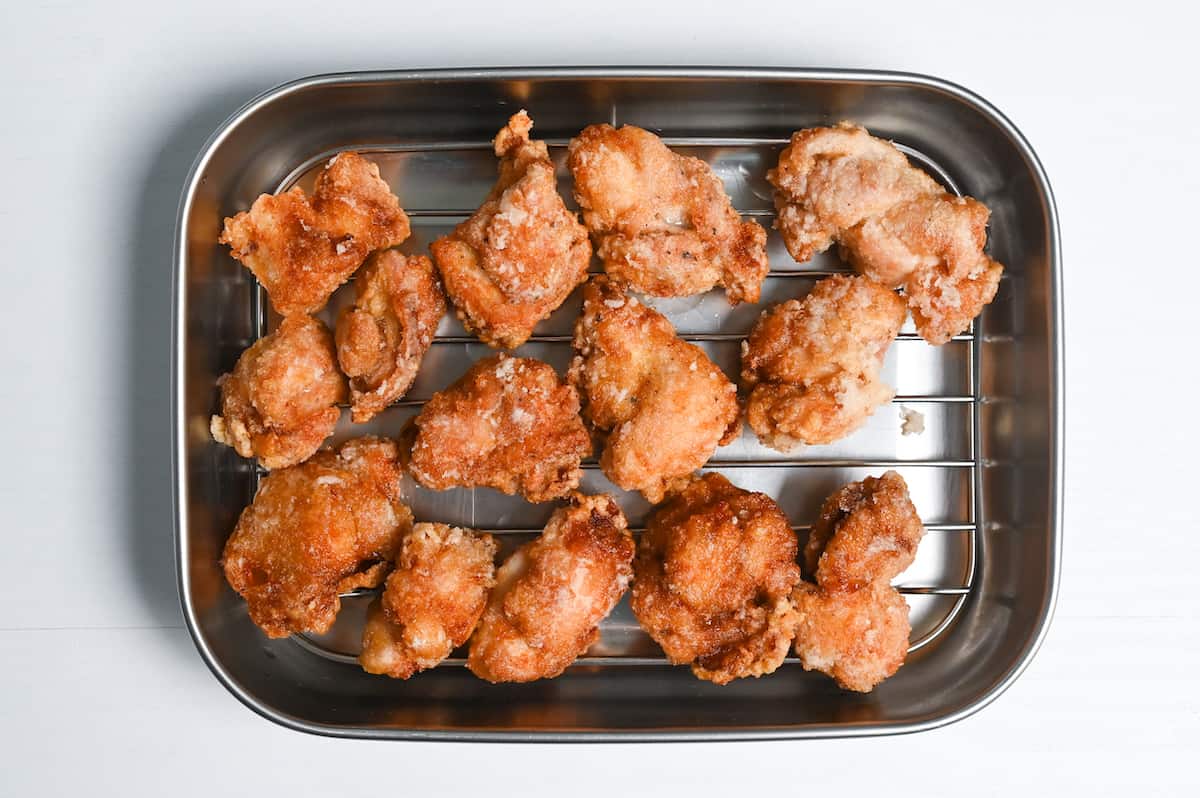
Serve up your perfectly crispy Tatsuta-age with a squeeze of lemon juice, and enjoy!
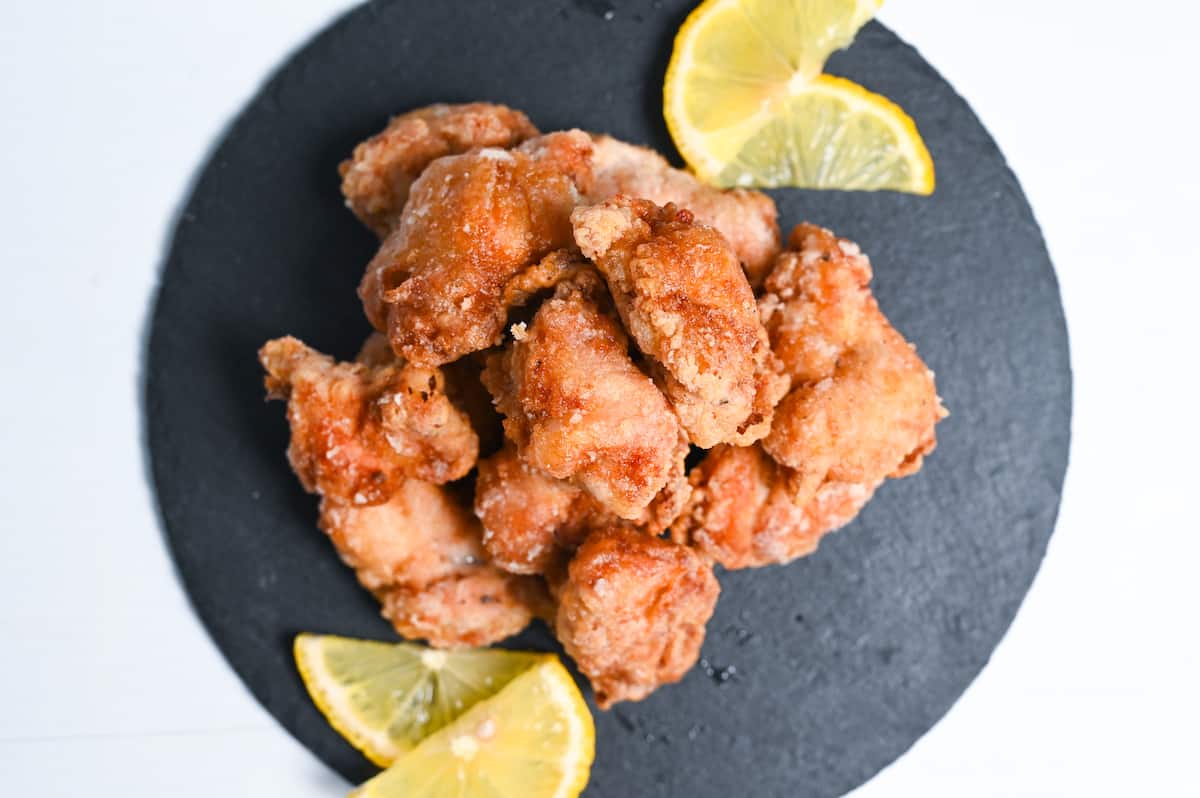
How to Store
In the unlikely event that there are leftovers, you can store tatsuta age in the refrigerator and eat within 1-2 days.
If you microwave it, it will lose some crispiness. I usually microwave it to warm up the middle and then put it under the grill to crisp the outside up again. But in all honestly, this tatsuta age still tastes great cold. If freezing, you can keep it for about one month.
Storage summary
Room temperature – Not recommended.
Refrigerated – 1-2 days.
Frozen – Up to a month.
FAQ
Okay, you might notice that tasuta age and karaage are almost identical; in fact, they are (almost). But this is a very tricky subject even to me as a Japanese. The differences are extremely subtle, and even many people in Japan don’t know about them.
To know the differences, you must know what “karaage” means. The term “karaage” is not technically the name of a dish, but it is, in fact, a cooking method where ingredients are deep-fried. It is believed that the name originally came from ‘kara (empty) age (frying),’ meaning frying without anything added. But you know, that’s just how it began because these days karaage is made with additional ingredients like marinade and flour or starch.
So traditionally, karaage is not marinated, but karaage as we know it today has evolved to use more ingredients. It might not be technically correct to call these “karaage,” but dishes often evolve over time, and the original meaning behind the name can become lost along the way. Apologies that it took so long to conclude, but in the modern sense, there are barely any differences between karaage and tatsuta age. The easiest way to explain is that Tatsuta age is part of the garage category. By the way, ‘karaage’ is most often used for chicken, however vegetables and fish (e.g. mackerel, tuna) can also be “karaage”.
Some people in Japan say that while you add normal flour with the marinade and make a batter for karaage, tatsuta age is marinated first and then dusted with potato starch later.
That makes it clearer, regardless of whether it’s technically right or not. So I have made karaage recipe and tatsuta age recipe separately.
In my opinion, one of the reasons why the Tatsuta age is so well known in Japan is because of the chicken Tatsuta burger created by…McDonald’s!
Developed as an original Japanese menu item, the burger combines ginger soy sauce-flavored tatsuta chicken with a creamy, slightly spicy sauce and cabbage strips, and is sandwiched in a bun.
It was a very popular and regular menu when I was a kid, but these days it’s only limited to a seasonal menu (it appears maybe once a year with some promotional collaboration).
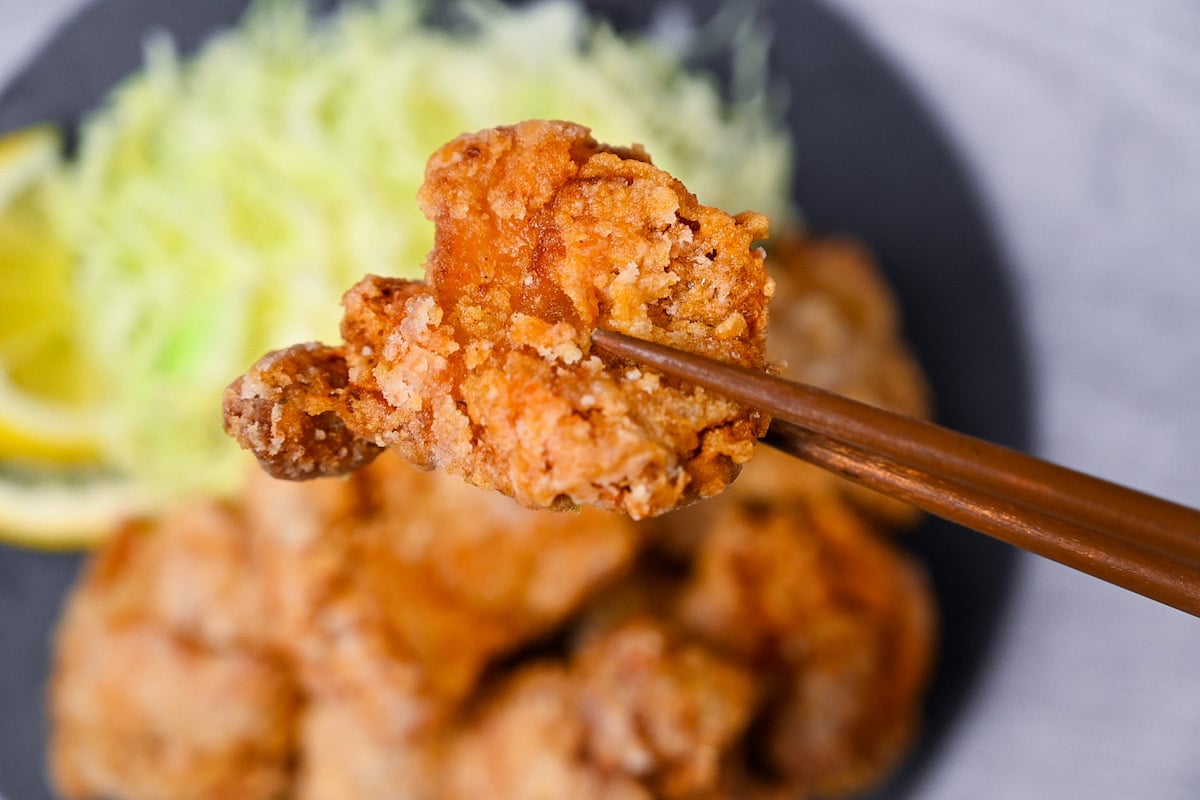
I hope you enjoy this Tatsuta Age recipe! If you try it out, I’d really appreciate it if you could spare a moment to let me know what you thought by giving a review and star rating in the comments below. It’s also helpful to share any adjustments you made to the recipe with our other readers. Thank you!
More Japanese Fried Recipes
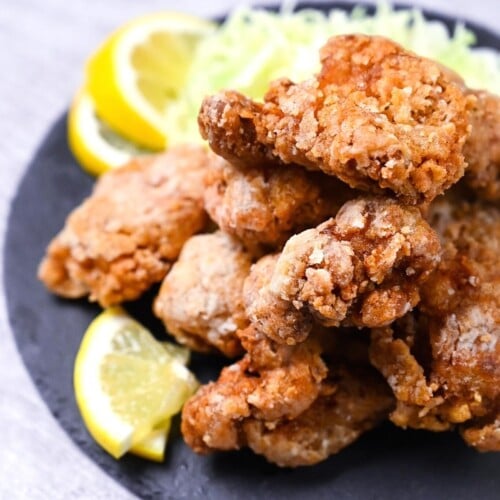
Chicken Tatsuta Age (Shallow-fried)
Ingredients
Instructions
- Cut 300 g boneless chicken thigh into bite size pieces. (40-50g, 1.4-1.7 oz per piece)

- In a zip lock bag or tupperware, add 1 tbsp soy sauce, 1 tbsp sake, ¼ tsp ground black pepper, 2 tsp grated garlic and 1 tsp grated ginger root together with the chicken pieces and marinate for 30 mins in the refrigerator.Once marinated, start preheating a pan of oil to 160 °C °C (320 °F). It should be about 3cm deep (just over 1 inch).

- Sprinkle about 5 tbsp potato starch onto a plate. Shake the excess marinade off each chicken piece before rolling it in the starch.

- Once the oil is hot, place the chicken pieces in the pan and shallow fry at 160 °C (320 °F) for 3 minutes on each side.

- Turn up the heat to 190 °C (374 °F) and fry for 1 minute on each side.

- Transfer the chicken to a wire rack or absorbent kitchen towels to allow the excess oil to drip off.

- Serve and enjoy.

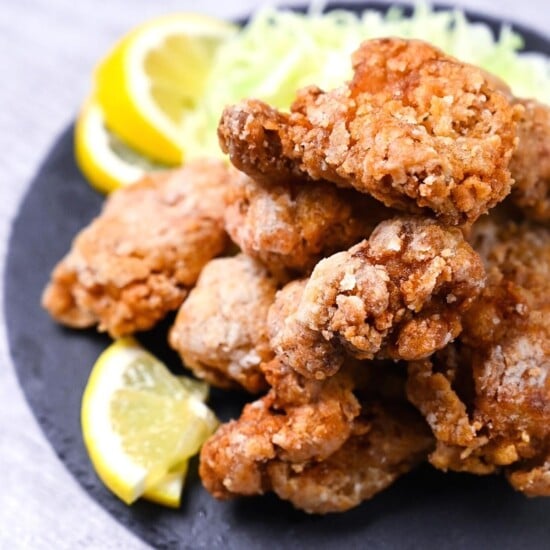


Leave a rating and a comment